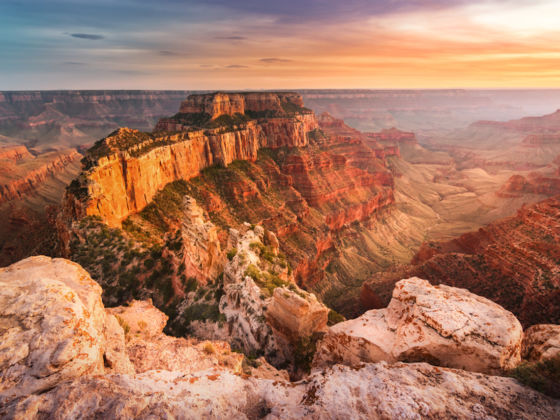It would be tough to say you’ve been to Arizona but haven’t seen the Grand Canyon. The good news is you don’t have to. Though it makes for a long day, you can leave Phoenix in the morning, visit the famous national park, and return to your hotel for the night. And that is just one of many wild destinations a few hours from the city. Arizona is truly the state where you can go from low desert to high pine-covered mountains in about two hours. Not to mention the famous red rocks, old mining towns, and spectacular ancient ruins, all within a short distance of Phoenix. If you have one day to explore, and you can rent a car, you have no excuse — you’ve got to see some of the most beautiful sites the state has to offer. Here are a few options for a great day trip from Phoenix.
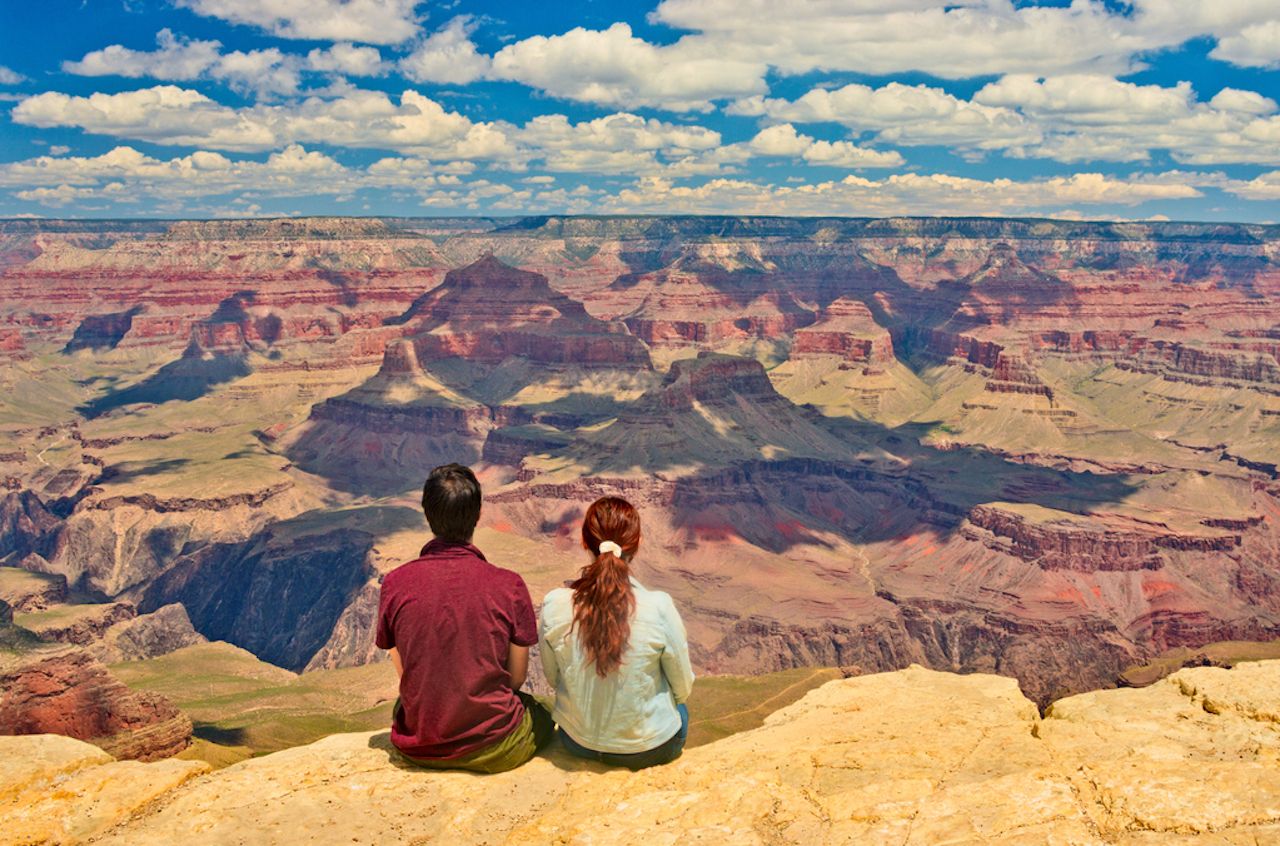
Photo: Byelikova Oksana/Shutterstock
Grand Canyon National Park — Stretching over a length of 227 miles and averaging about 10 miles in width, the Grand Canyon is among the best-known of the Seven Wonders of the Natural World. Formed over millions of years by the Colorado River, wind, rain, and erosion, the canyon comprises thousands of miles of side canyons, mesas, and volcanoes, exposing Earth’s history through its rock layers dating from 250 million to two billion years. The easiest and most fun way to learn about this geology is to walk the interpretive rim trail and stop at each educational point where the signs explain the ages of the rocks at different levels. Though the park gets crowded, parts of this paved trail offer moments of solitude, and the same vistas of the immense chasm as more crowded at viewpoints.
The drive from Phoenix to the South Rim through Williams takes just over three hours. However, this is the most popular way to enter the Park, and thus always includes a wait in line. To avoid the queue, drive through the historic Cameron Trading Post. This scenic alternative takes about half an hour longer but delivers you to the East Entrance, where you can drive through without a wait. You’ll get your first glimpse of the Grand Canyon on this side at the Desert View Watchtower, enjoying some of the most spectacular views of the Canyon and the Colorado River on the bottom, which is nearly impossible to see from any other viewpoint. For the next stop, the Visitor Center offers an introduction to the area, maps, brochures, cultural exhibits, and bike rentals for those who prefer to explore the park on a bicycle. For an unforgettable culinary experience, dine at the historic El Tovar restaurant with great views of the Canyon, then watch the sunset over the one of the most famous landscapes on earth.

Photo: BD Images/Shutterstock
Flagstaff — At an elevation of 7,000 feet, the town of Flagstaff lies only only two hours from Phoenix in the shadow of the sometimes snowcapped San Francisco Peaks — also known as Kachina Peaks. It offers an environment as different from the desert as night and day. Home to the world’s largest ponderosa pine forest, Flagstaff is a great destination for outdoor enthusiasts in every season, with miles upon miles of hiking and biking trails. The Visitor Center house in the historic downtown Train Station on Route 66 is a good place to learn about the town and its surroundings and even watch a train go by. Plus, Flagstaff had the honor of being named one of Matador Network’s “Coolest Towns in America” in 2018.
After a stroll through the center of town, visitors can head to the Museum of Northern Arizona for a glimpse into the geology and Native American history of the area. Across the street, an old historic locomotive dating from 1929 marks the entrance to the Pioneer Museum, another great place to learn about the history of people who first settled here.
Trails for all levels of hikers surround the town, from short walks in Buffalo Park to the Kachina Trail through the heart of the mountain. Paths take you through tall ponderosa pines, intermingled with patches of aspens and, in spring, wildflower-filled meadows. From the highest point of the mountain, visitors can go into the depths of the earth, entering a lava river cave. After dark, Lowell Observatory offers a glimpse into our universe through the telescope that was used to discover Pluto.

Photo: Tim Roberts Photography/Shutterstock
Sunset Crater National Park — Glowing in gold and orange juxtaposed with the black lava around it, Sunset Crater reveals the reason it got its name. It’s a relatively young cinder cone, which is a ring formed by lava spewed out of a volcanic vent within the San Francisco Peaks. At the entrance of the park, the Visitor Center helps guests understand the area’s history and geology through the interactive exhibits. Next, visitors can walk the interpretive Lava Trail around the cone and enjoy a unique environment of sharp rock formations, a lava tube, and areas shaded by mature ponderosa pines. In spring, you may see the delicate red Sunset Crater penstemon flower that grows nowhere else on Earth. Though climbing Sunset Crater is not possible, a trail leads up Lenox Crater, offering a hike to the top and into a similar cinder cone, and views of both Sunset Crater and the San Francisco (Kachina) Peaks from the top.
Driving farther through the Sunset Crater-Wupatki loop road, Wupatki National Monument and the surrounding archaeological sites offer a glimpse into the lives of ancient Pueblo people who once lived in the area. Smaller structures, like Wukoki, Lomaki, Box Canyon, Citadel, and Nalahiku are also worth a quick stop. Looking into the distance from the empty high desert vintage points, the Painted Desert shows off all its colors, especially at sunset.
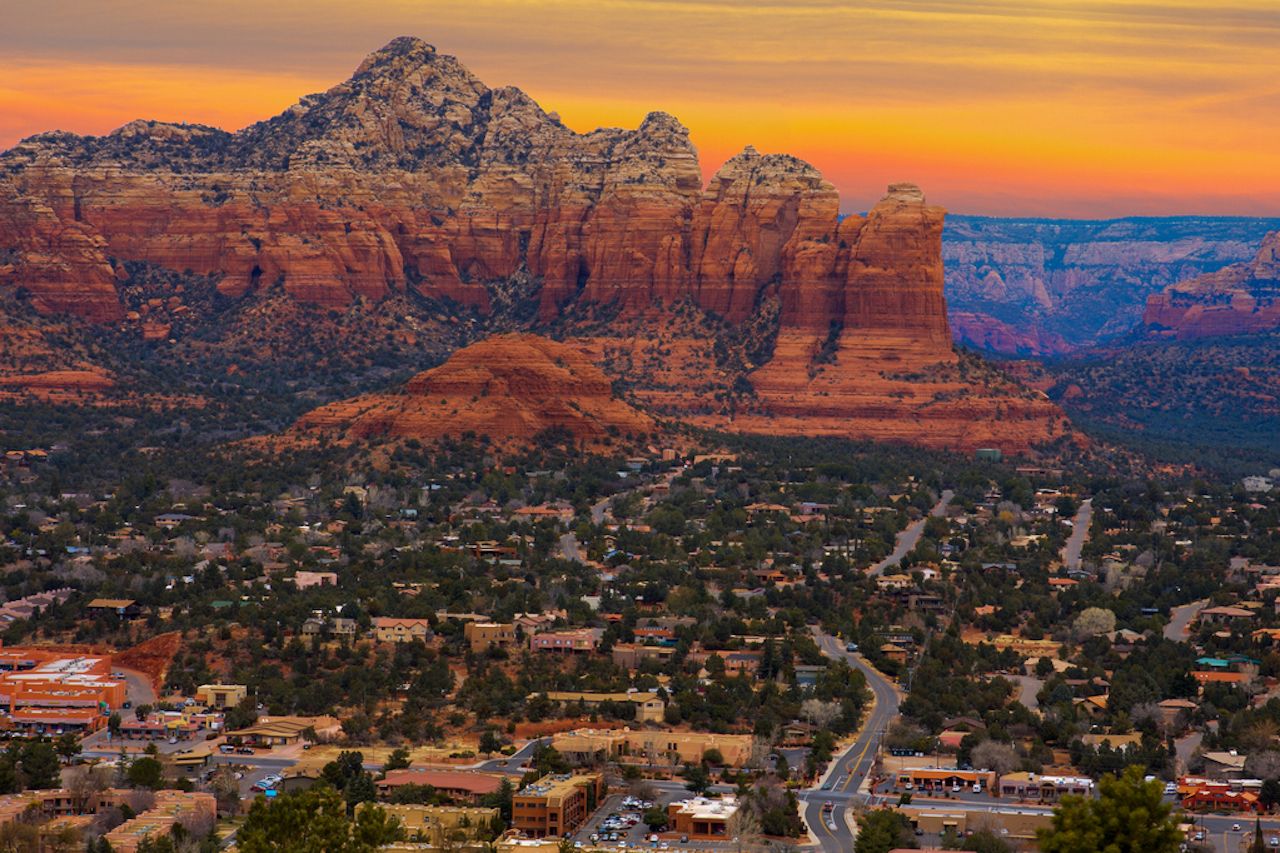
Photo: Josemaria Toscano/Shutterstock
Sedona — Known for its red rock formations and art-filled boutiques, Sedona, considered one of the most beautiful small towns in the US, is one of the top destinations in Arizona. From miles of hiking and biking trails to the red rock country to a great selection of art galleries and dining options, Sedona offers something for everyone. At the Sedona Heritage Museum, you can glimpse into the history of the town and surrounding area. While at the Chapel of the Cross, you can marvel at some architecture that incorporates the surrounding environment. For an old-fashioned dining experience, the Coffee Pot Restaurant, one of the oldest in town, serves a hearty meal in the shadow of the Coffee Pot red rock formation.
Just outside the town, Slide Rock State Park is a perfect summer swimming destination, with the ultimate nature-made water slide. Shaded hiking trails in Oak Creek Canyon also make visitors feel thousands of miles away from the desert. The scenic drive up to Oak Creek Vista highlights Arizona’s ecological diversity, from desert vegetation to ponderosa pine forests. On the way back to Phoenix, a stop at Montezuma Castle offers a look at one of the best preserved ancient cliff dwellings in North America.
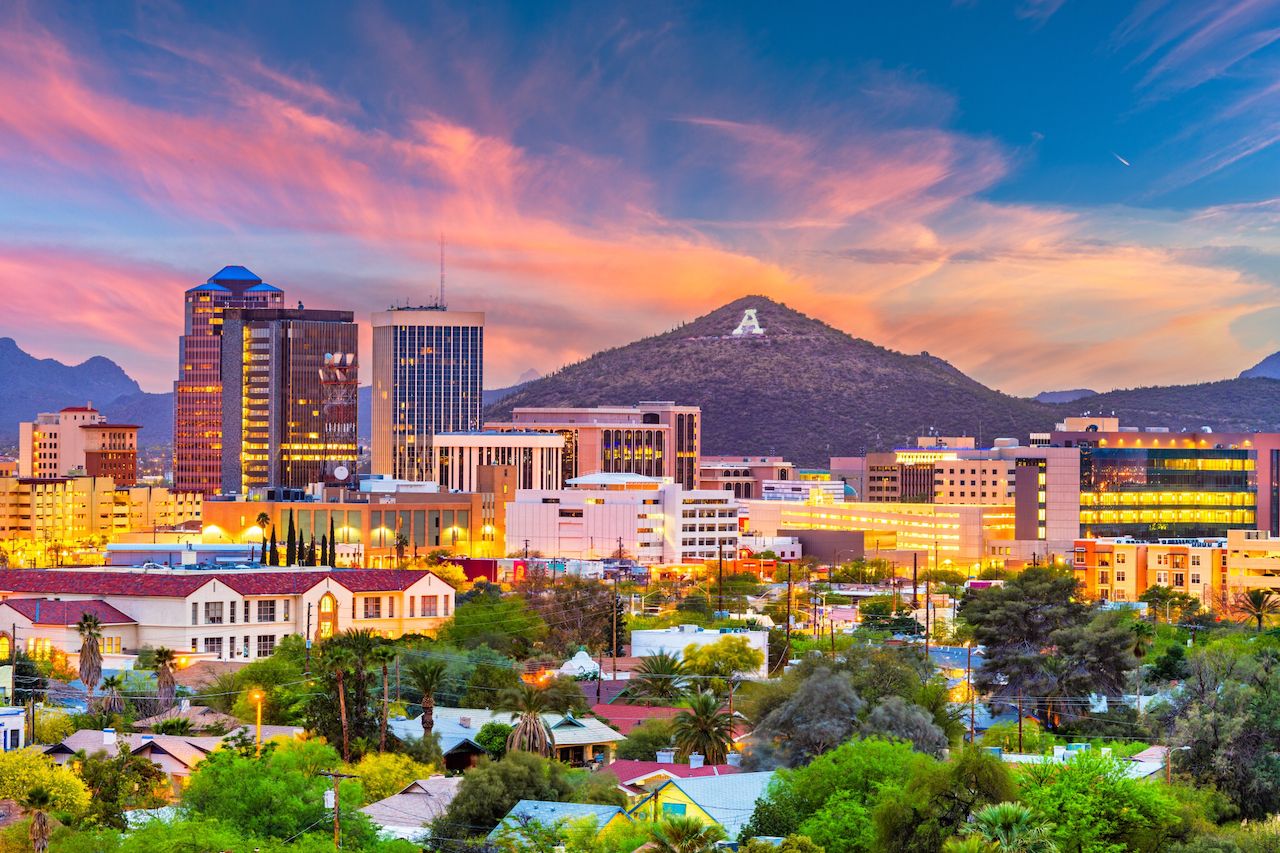
Photo: Sean Pavone/Shutterstock
Tucson — Tucson sits in the shadow of Mount Lemmon, one of the Arizona’s “sky islands” or a high-altitude forest lying above a very different type of ecosystem below. Tucson is surrounded by tall saguaros, protected by Saguaro National Park. Hundreds of miles of hiking trails through the surrounding mountains and desert areas, and urban trails connecting neighborhoods within the city, offer plenty of walking options — from easy strolls to strenuous climbs. Art lovers can explore the murals of Tucson throughout the town — enjoying the work of local, national, and international muralists — or visit one of 12 galleries.
Wild West enthusiasts shouldn’t miss Old Tucson, the setting for most of the old Western movies, offering live action shows, musicals, and live entertainment. For a lunch break, you can stop at El Charro Cafe, the nation’s oldest Mexican restaurant, still offering a great meal. Then visit the Pima Air and Space Museum, one of the largest aviation museums in the world. On the way back to Phoenix, a stop at the Arizona-Sonora Desert Museum offers a good understanding of the natural environment in and around Southern Arizona.
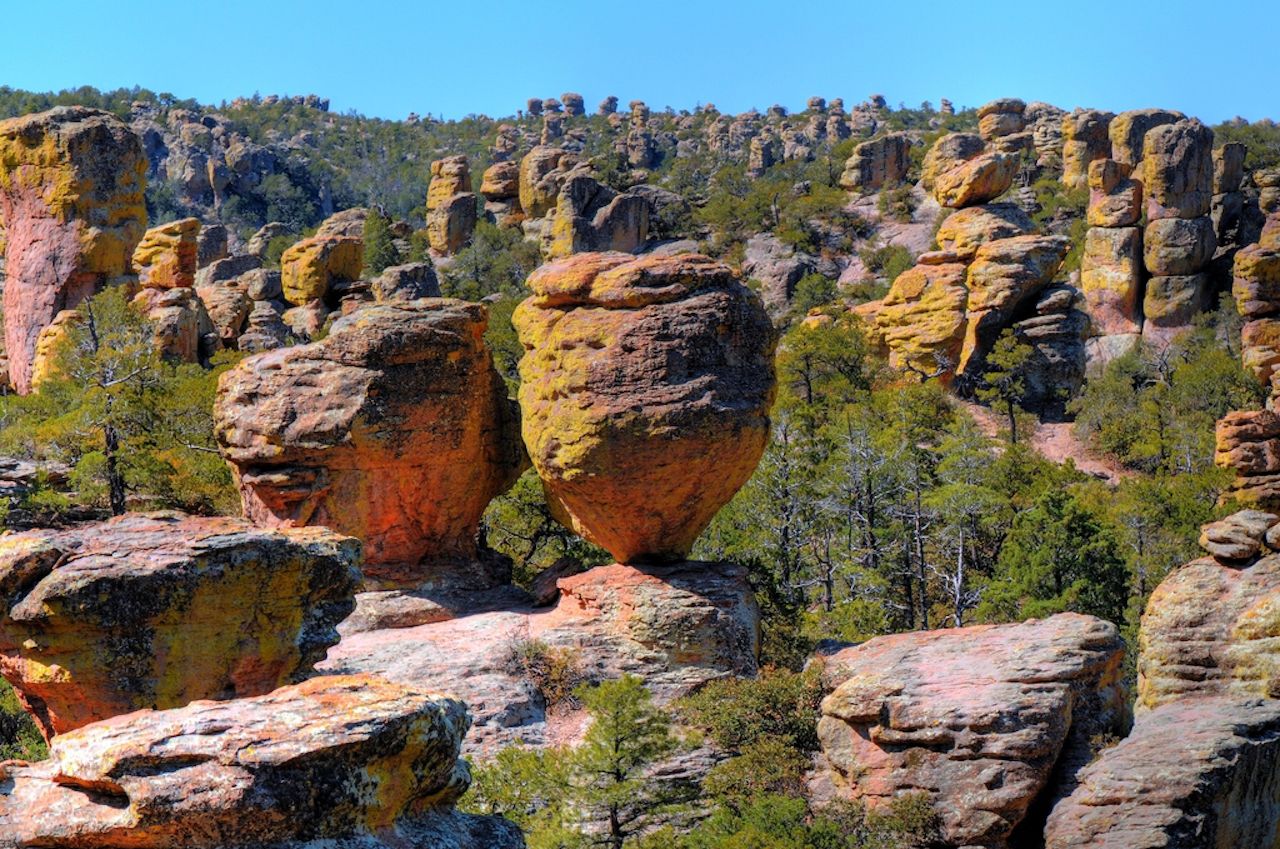
Photo: Paul B. Moore/Shutterstock
Chiricahua National Monument — The Chiricahua area is one of the most remote and spectacular in Southern Arizona. It’s known as a “wonderland of rocks” for its dramatic rock pillars, which rise hundreds of feet in the air, balancing on a narrow base, and seem on the verge of toppling at any moment. A stop at the visitor center offers a good introduction to the geology and history of the mountains, and an eight-mile scenic drive provides opportunity for the visitors to see this unique ecosystem. Along the road, viewpoints and trailheads have scenic views and hikes showcasing beautiful vistas that change around each bend. But the natural environment is not the only draw of the area. The place also has a historical significance as it was the sadly stage of the 24-year-long Apache Wars, a bloody conflict between the US Army and several Apaches nations.
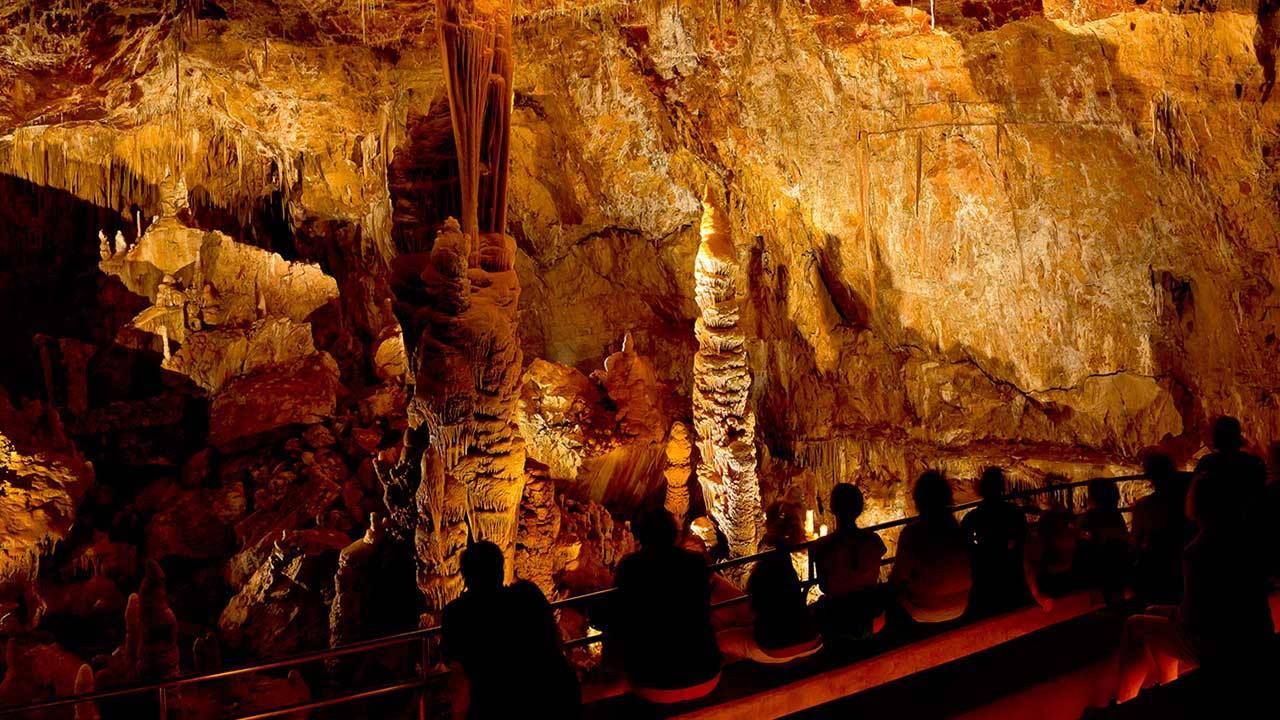
Photo: Kartchner Caverns State Park/Facebook
Kartchner Caverns — The Kartchner Caverns are fascinating caves in the desert of Southern Arizona. Two separate ranger-led tours lead visitors through them, and they both require reservations. The Rotunda Throne Room tour takes about one and a half hours through underground passages with delicate rock formations, culminating with the Throne Room, home to the tallest and most massive column in Arizona, nicknamed Khubla Khan, and one of the world’s longest soda-straw stalactites.
The Big Room tour takes visitors through a different entrance, showing off impressive formations around each bend. This tour is not available between mid-April and mid-October, when a colony of about 1,500 bats takes residence in the Big Room in the summer. Short trails show off the desert around the, caves where visitors get a better understanding of the environment that created the caves. After leaving the area, Wild West enthusiasts can drive to the historic Tombstone, home to the OK Corral and the Tombstone Courthouse State Historic Park.
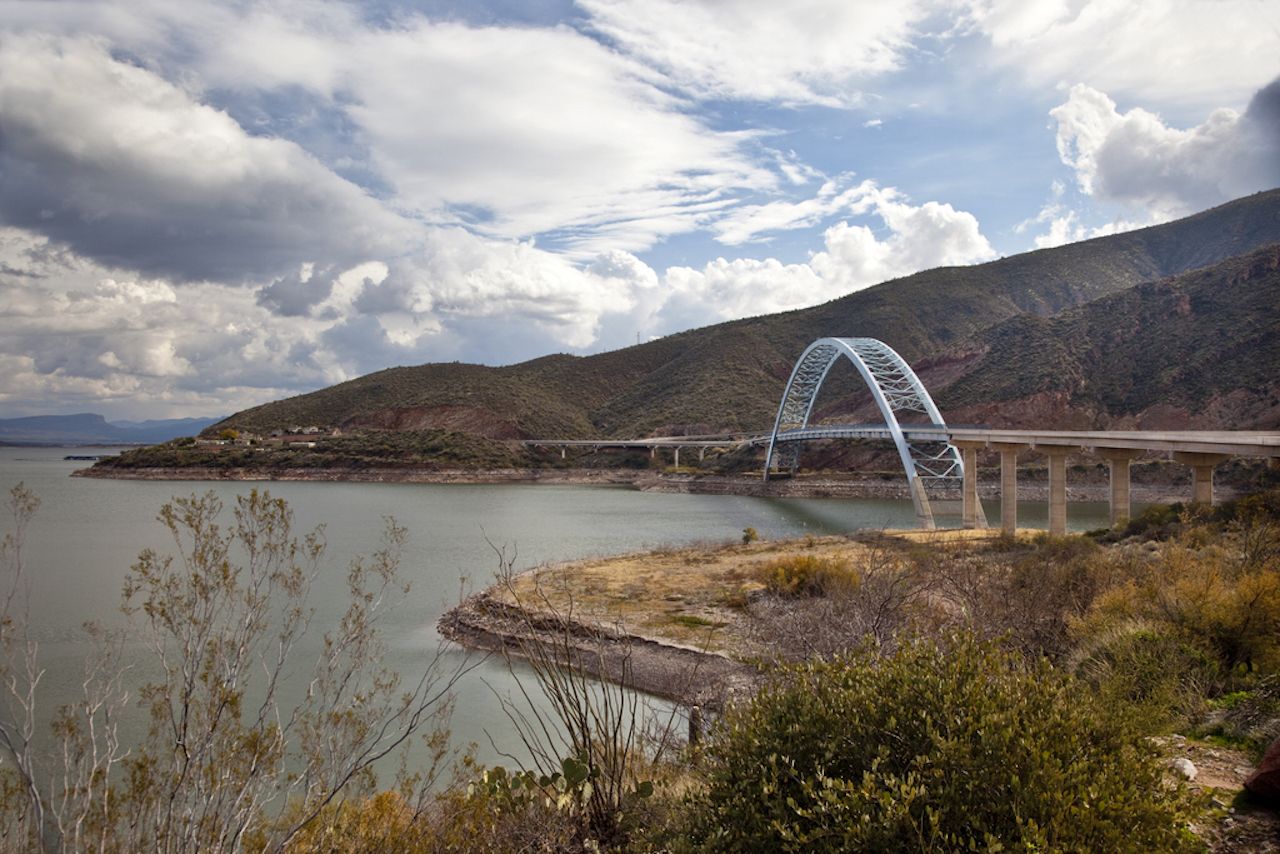
Photo: Chris Curtis/Shutterstock
The Apache Trail Scenic Drive — Driving the Apache Trail is one of the most rewarding day trips from Phoenix. It was originally made by the Apache tribe to move through the rugged wilderness of the Superstition Mountains. Later used by stagecoaches, this road remains the best and most scenic way to get through the mountains. Though roughly half of the 40-mile loop is dirt, driving it is not only a great adventure but the perfect way to experience the history and wilderness of the area near Phoenix.
The first stop on the trail, Goldfield ghost town, an old mining town set up during the gold rush, offers a glimpse into the history of the Superstition Mountains and its surroundings. Across the street, the Lost Dutchman State Park, crisscrossed by trails, gives hikers and bikers of all abilities an opportunity to experience the Superstition mountain wilderness.
Driving on the Apache trail through a narrow scenic road with steep canyon walls, you eventually reach Canyon Lake, a good place to take a short hike. Come lunchtime, Tortilla Flat, a settlement with six residents, offers authentic Southwest fare and a glimpse into an old-fashioned curio shop. Past this tiny town, the road turns into dirt and continues on the shore of the long and narrow Apache Lake, until it reaches Roosevelt Dam, crossing some of the most lovely scenery.
Tonto National Monument, the next place worth a longer visit, features Salado-style cliff dwellings. The dirt road and the Apache Trail ends at Roosevelt Lake. However, there is no need to turn around. Instead, continue on towards the Boyce Thompson Arboretum, the state’s oldest and largest botanical garden, a great destination for an afternoon stop before heading back to Apache Junction and Phoenix.
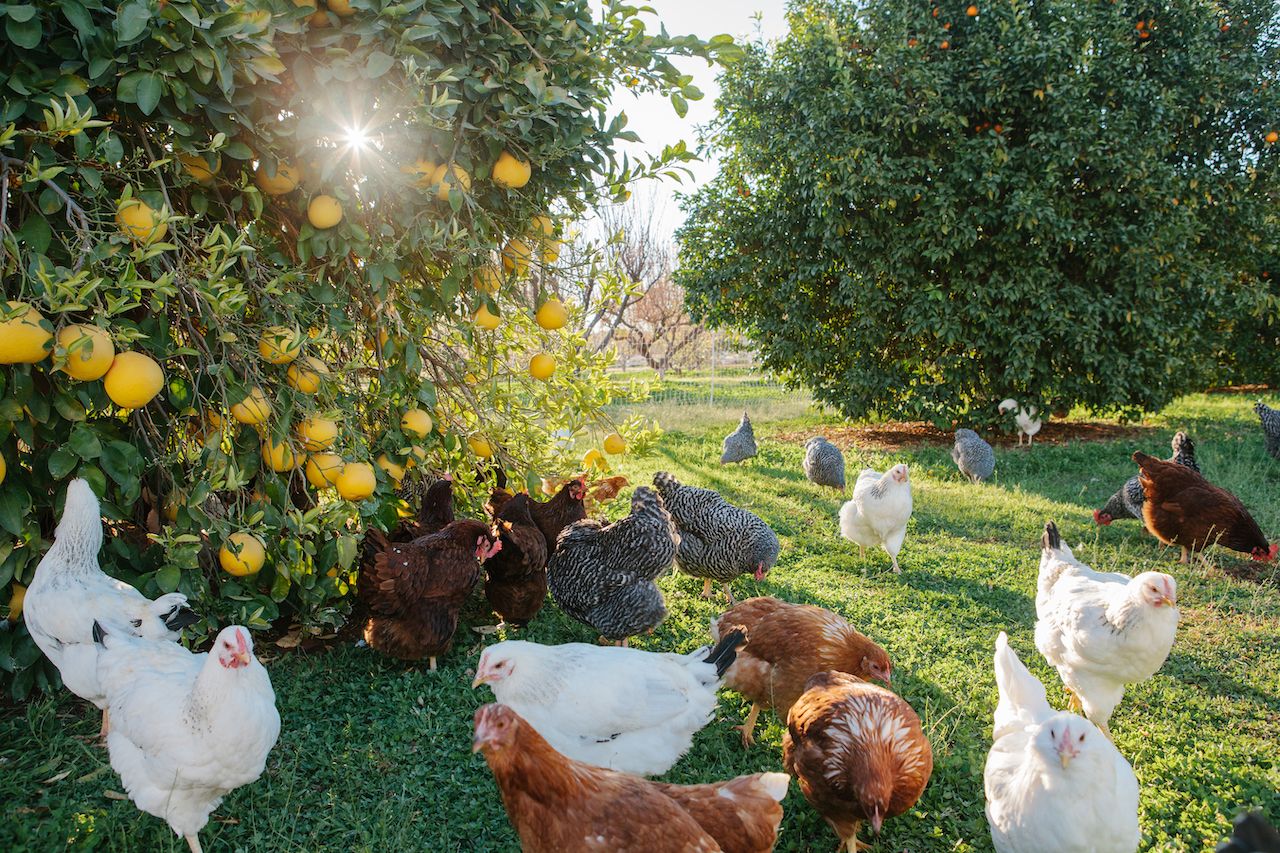
Photo: Grace Stufkosky/Visit Phoenix
Mesa — You won’t have to go far outside of Phoenix to make this day trip; the small city of Mesa is just 25 minutes east of downtown. But a day in Mesa is a must for anyone interested in agriculture and farm-to-table dining. Follow along the Fresh Foodie Trail, a coalition of family farms and agritourism attractions. Visit the Queen Creek Olive Mill to see how olive oil gets made and sample a variety of flavor infusions. Taste juicy citrus slices and tour the groves at The Orange Patch. Dig into some Arizona barbecue at Jalapeño Bucks, where the locals’ favorite order is the peanut butter, jelly, and brisket sandwich. Depending on your interests, you could add a dairy farm, flour mill, winery, and more into your itinerary. End the day at Agritopia, an urban agriculture community in the nearby town of Gilbert, where you can browse the creations of local craftsmen at Barnone, choose between eateries like Fire and Brimstone and Joe’s Farm Grill, and grab a drink at Garage-East wine bar or 12 West Brewing.
Make a full weekend out of it by going glamping at The Cozy Peach, a collection of refurbished vintage Airstream trailers within Schnepf Farms. Order breakfast directly to your trailer in the morning, then spend the day biking around sprawling grounds, picking produce and flowers in the U-Pick garden, visiting adorable farm animals, and buying a big slice of buttery peach pie at the on-site bakery and country store. If you don’t mind crowds, plan your stay around one of Schnepf Farms’ seasonal events, like the Pumpkin and Chili Party in the fall and the Peach Blossom Celebration in the spring.
